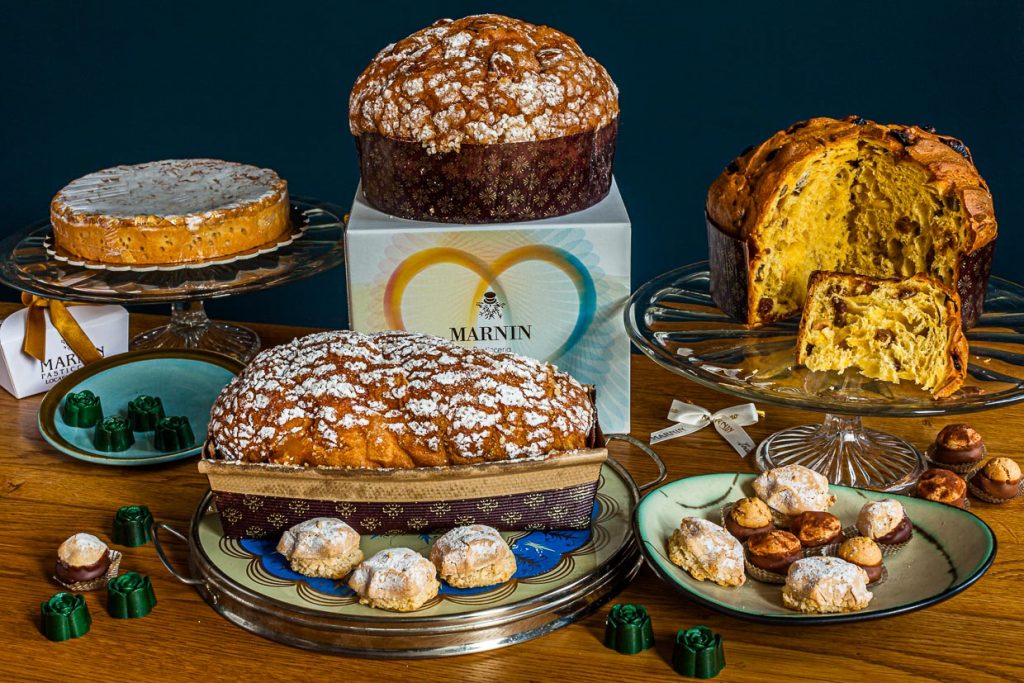Pasticceria Marnin in Ticino
The residents of Piazza San Antonio in Locarno on Lake Maggiore live in an olfactory land of milk and honey. Every week, on Wednesday night, a venerable townhouse is filled with the scent of the night. Because on this night, panettone is baked at the Pasticceria Marnin.
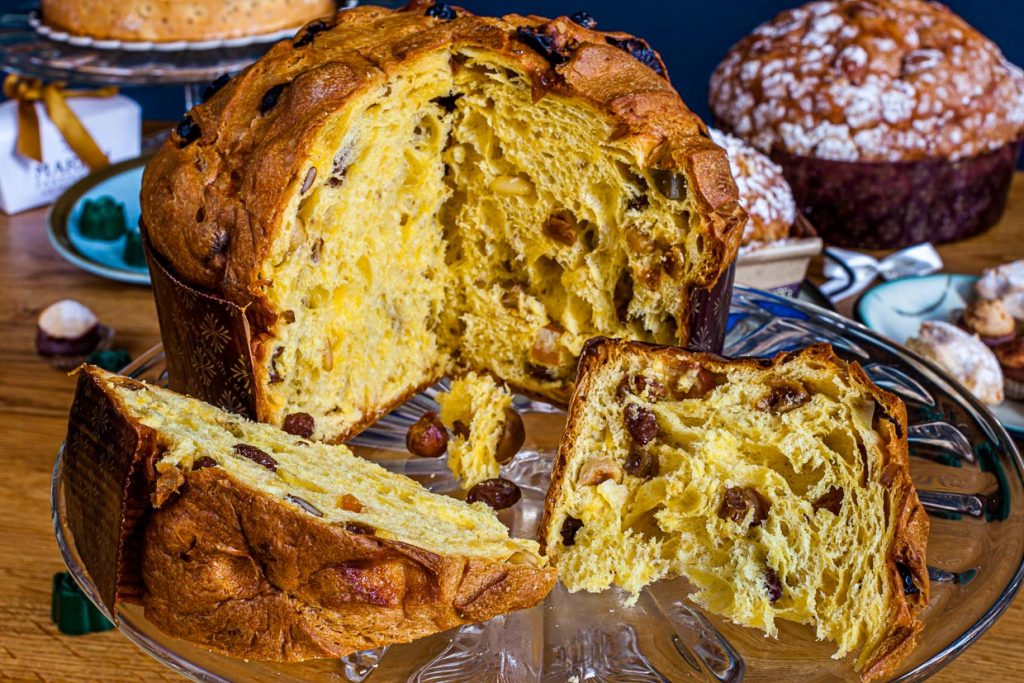
The Italian Christmas classic is so popular in Italian-speaking Switzerland that it is eaten all year round. In Locarno on Lake Maggiore, we visit Arno Antognini, who has been making panettone with passion, precision and creativity for over 30 years. This story is not about the dust-dry industrially produced yeast varieties, studded with cheap pseudo-orangeat and whose pompously bell-like packaging distracts from the sad contents. This story is about the perfect balance between light-airy dough and the flavor of candied fruit, of surprising juiciness and subtle sweetness. To understand how rich ingredients such as butter, eggs, candied fruits and even nuts are successfully transformed into a pastry that is both light and succulent, we spend two days in Locarno looking over Arno Antognini’s shoulder at his pasticceria.
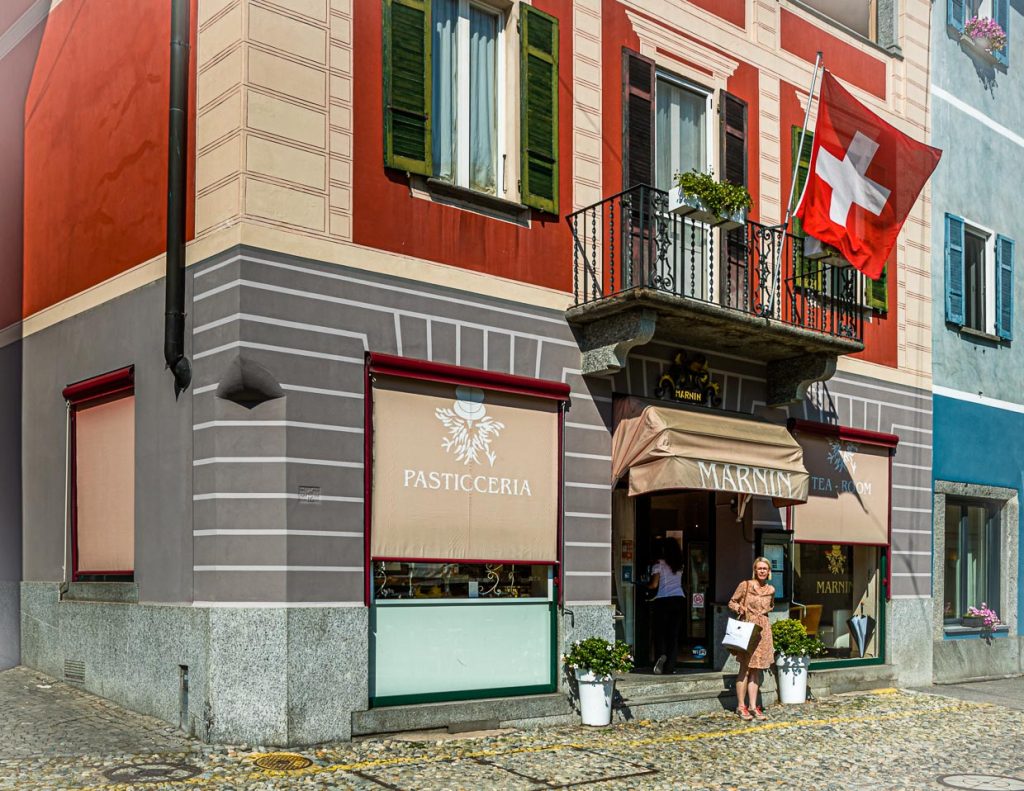
The trick is in the dough
In about 30 years, Arno Antognini has brought the traditional pastry to perfection. Few people know that real Panettone is made on the basis of a mild sourdough, which, as many amateur bakers have experienced, is an unconventional creature with often unpredictable whims. The capricious dough, called Lievito Madre, has also demanded a lot of patience from Arno Antognini. The madre is made from Farina Bianca 00 wheat flour, which gives the dough its distinctive baking drive.
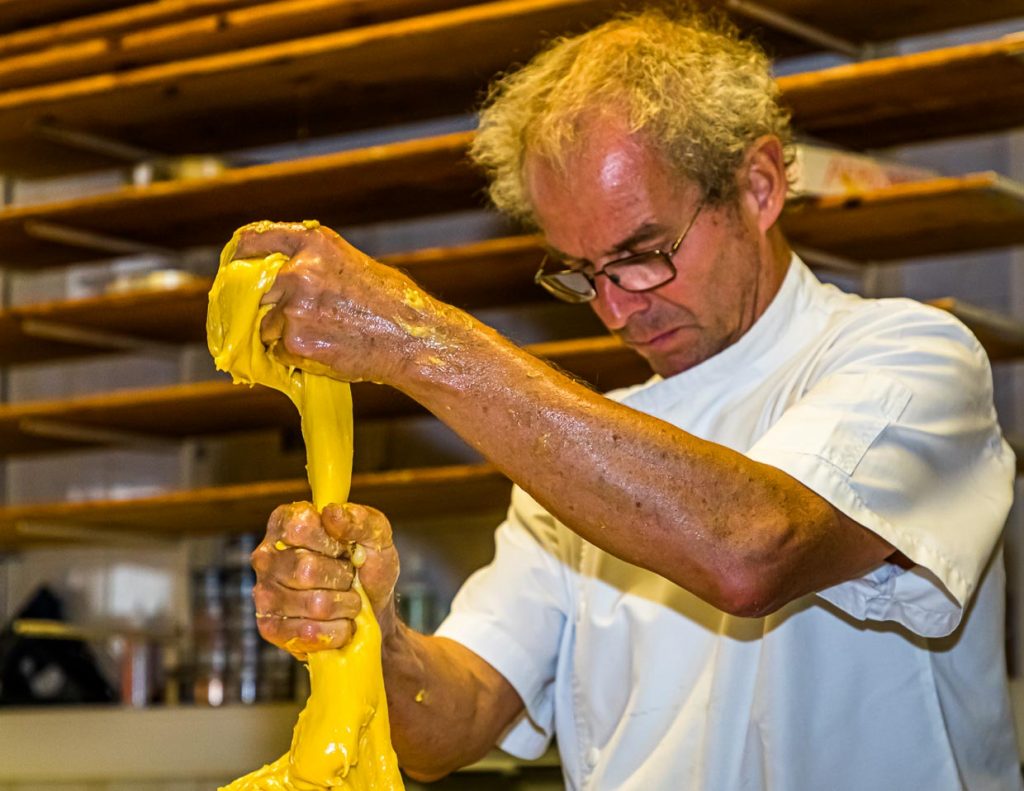
The madre is refreshed three times with flour and water. Only then the rich ingredients such as eggs, butter and sugar are added to the dough. This is how the Marnin confectionery produces a wheat sourdough that smells pleasantly sweet. In his early days, Arno Antognini often found the dough too sour. But after many years of making dough, he says, he has it in his nose and smells when the dough is perfect. Fellow bakers, full of respect for the tricky traditional pastry, have often asked if they could follow the development of a weekly production with him. Some have even hired him for the Christmas season, when production increases from 180 kilos a week to 600 kilos.
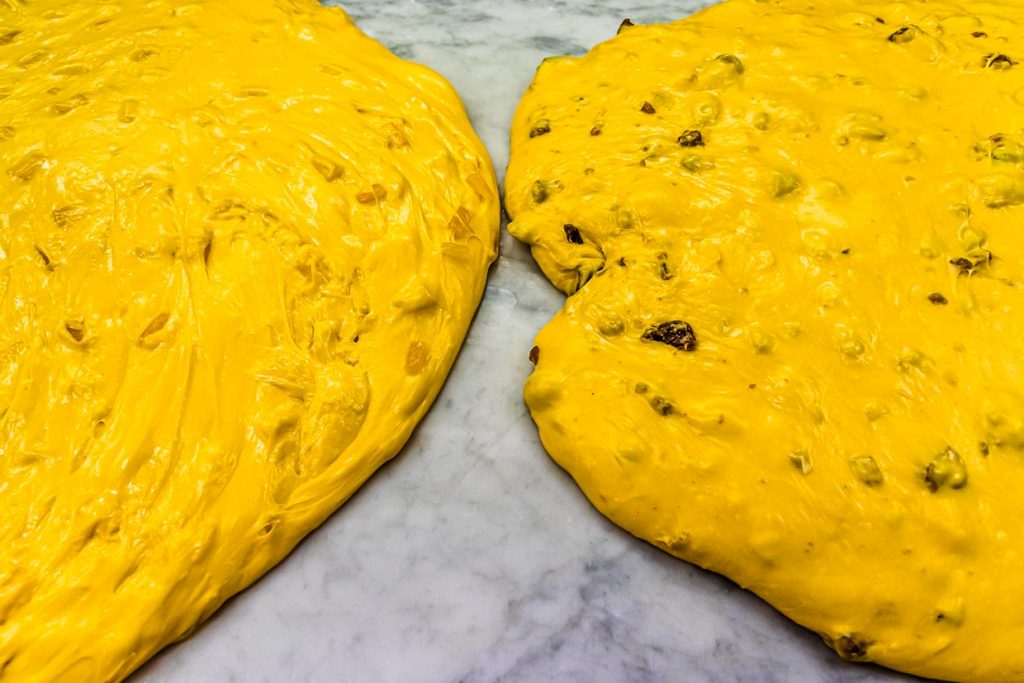
It is the power of the sourdough, the lievito madre, that gives the panettone its wadded lightness. It’s hard to believe that the basic dough at the Marnin pastry shop is 70 percent butter. Every week from Wednesday to Thursday, the house in Piazza San Antonio is all about the Christmas classic. Unlike in Italy, Panettone is eaten all year round in Ticino.
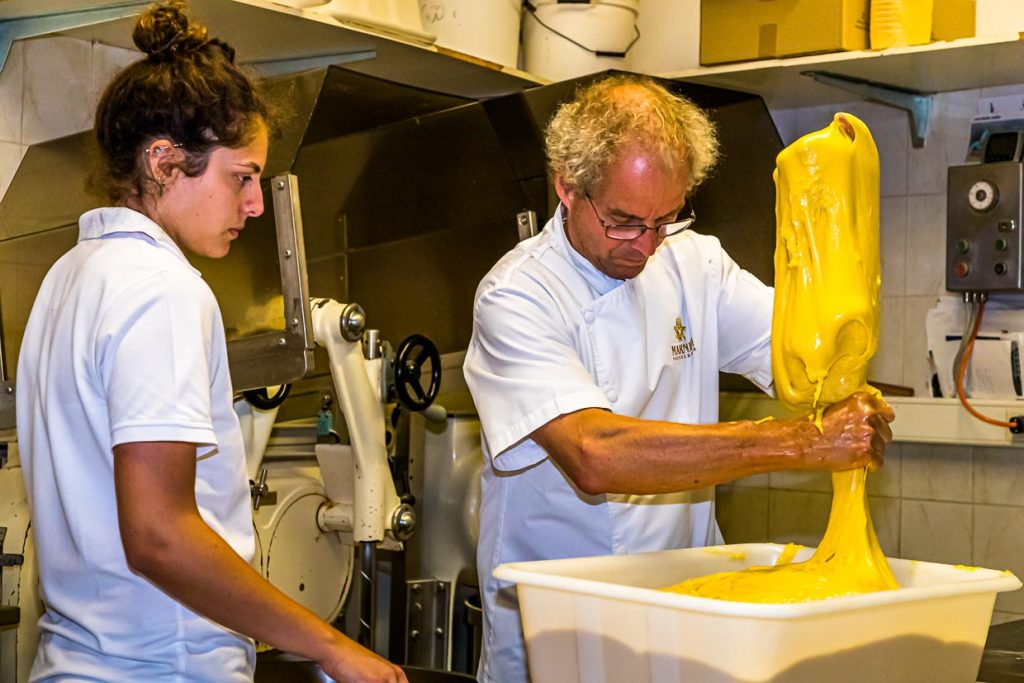
Family ties
Meanwhile, daughter Naomi, a trained baker and confectioner, also works in the family business. When she talks about the sourdough, it sounds as if it is a family member. Since the dough can’t talk, she says, her father had trouble understanding it at first. Her father guides the dough in water and feeds it flour and water once a week. Arno Antognini does not leave the management of the sourdough for the most important product in the Marnin house to anyone else. Because if the dough rises too quickly, it does not create the large pores that make it appear so light. The secret lies not only in a good sourdough starter. Only with the perfect dough management does the quality remain at the highest level.
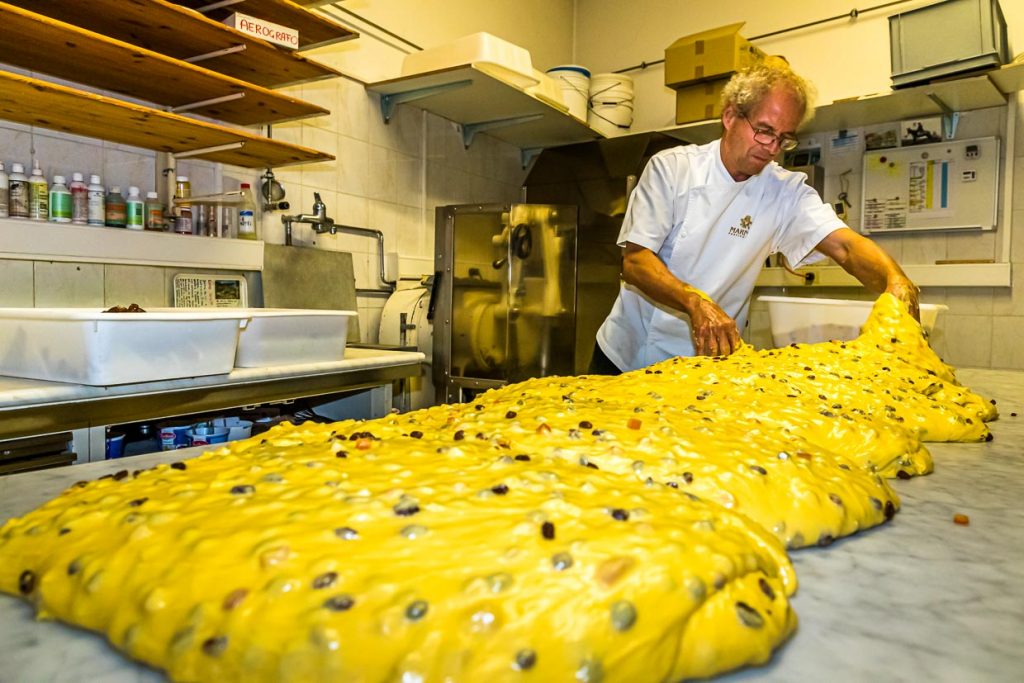
Panettone Tradizionale remains the Christmas classic
From mid-November, production at the Marnin bakery increases from 180 kilos per week to 600 kilos. Then the dough hooks no longer stand still and the trays of Panettone Tradizionale, Nostrano and Marron constantly rotate in the oven. Most panettone bakers have long since started to develop their own creations. At Marnin, the Tradizionale with raisins, candied lemon peel and candied orange peel is still the best seller.
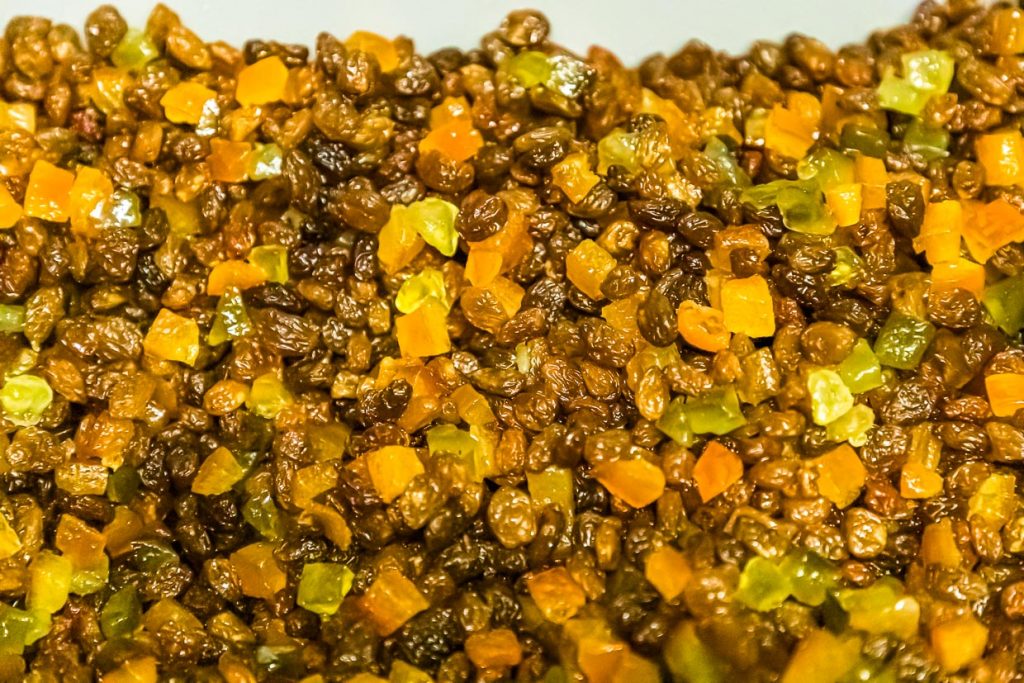
But many customers do not like the candied citrus peel. Therefore, during the winter season, there is panettone with marron glacée. It combines the French Christmas cult of the candied chestnut with the Italian Christmas classic panettone. For summer, Arno Antognini has come up with a fruity version with semi-candied pineapple pieces,. The Panettone Nostrano Marnin is typical of the canton of Ticino. It was awarded the Swiss Delicatessen distinction by the Swiss Confederation in 2014 and is synonymous abroad with original Swiss quality. Hazelnuts, walnuts, pine nuts and dried figs are added to the main dough.
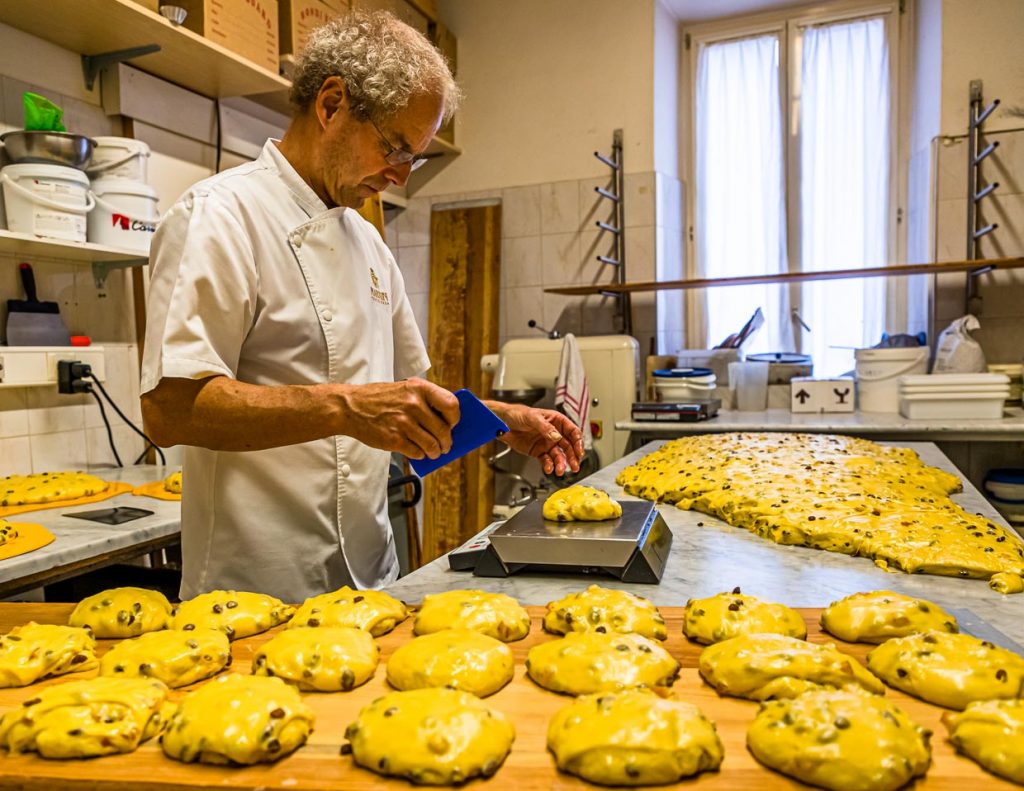
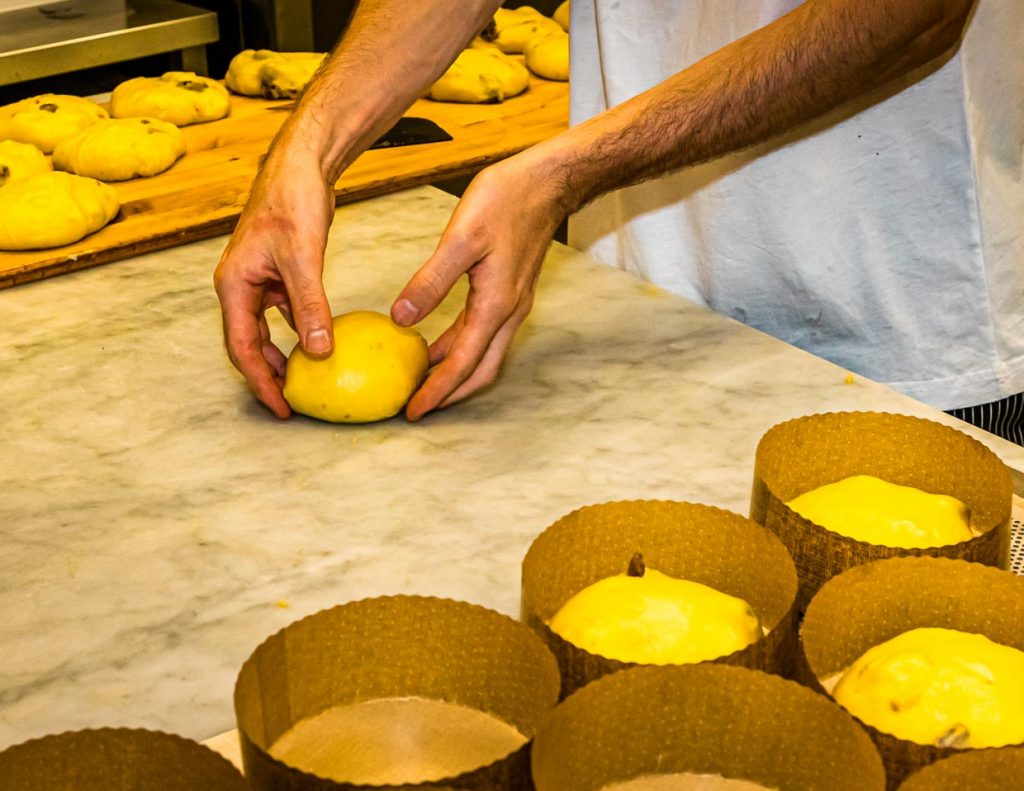
In the rest lies the strength
But no matter what ingredients are added to the main dough, further processing is a long and artisanal process. Arno Antognini reaches into the huge mixing bowl with both hands. The shiny dough looks like an amorphous creature and now rests for a while on the countertop. Then it is portioned by hand, weighed, and shaped into a round dough ball. Rest is again required before it is filled into the brown sleeve so typical of the panettone and another rest of the dough is due. Three times several hours pass until the first filled cuffs are put into the oven. By then it is already late in the evening and a whole night is spent baking panettone in sizes ranging from 100 grams to 1000 grams.
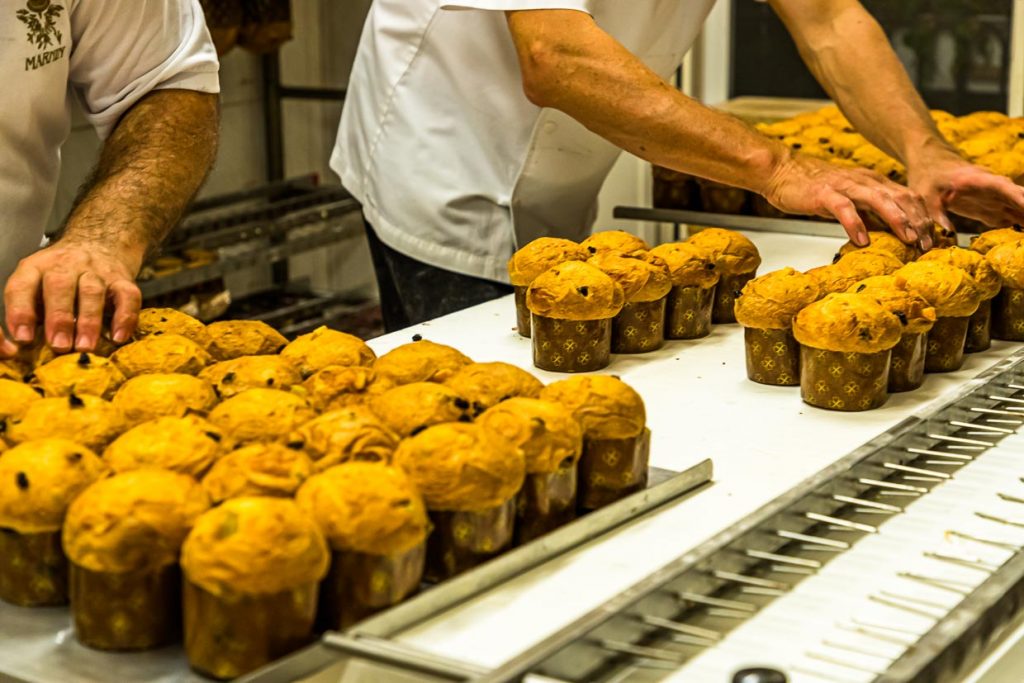
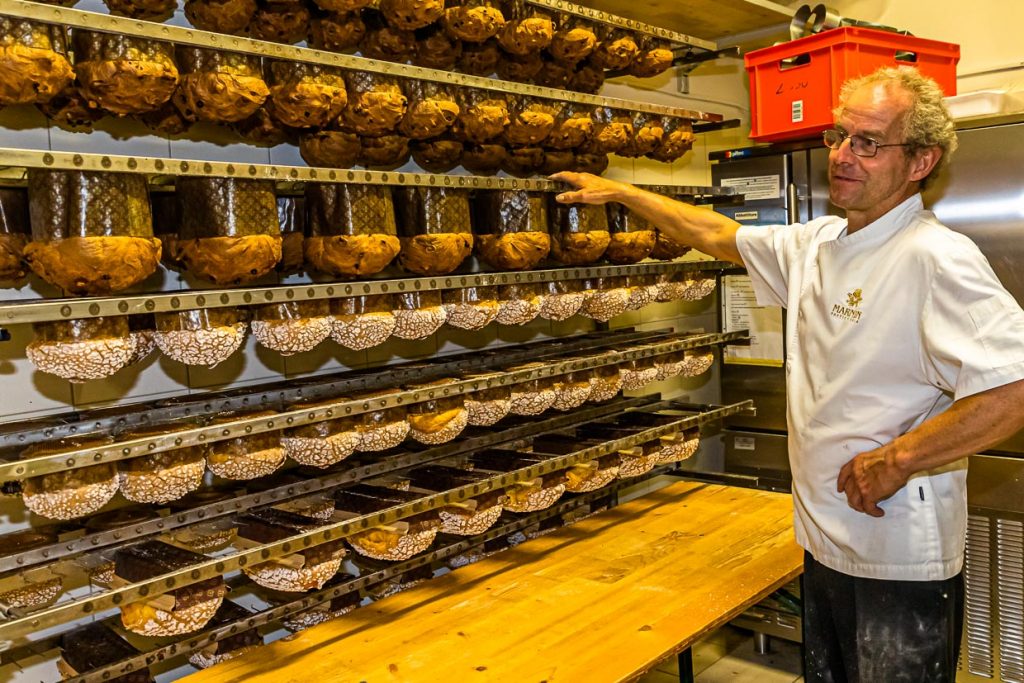
Upside down into Christmas happiness
At the end of the baking process, the dome of the panettone protrudes up to 20 centimeters from the sleeve. To ensure that the baked product remains so imposing, it is turned upside down directly from the oven. This is done in no time at all and with the help of a special device. Hanging, the panettone cools for another eight hours before being packaged.
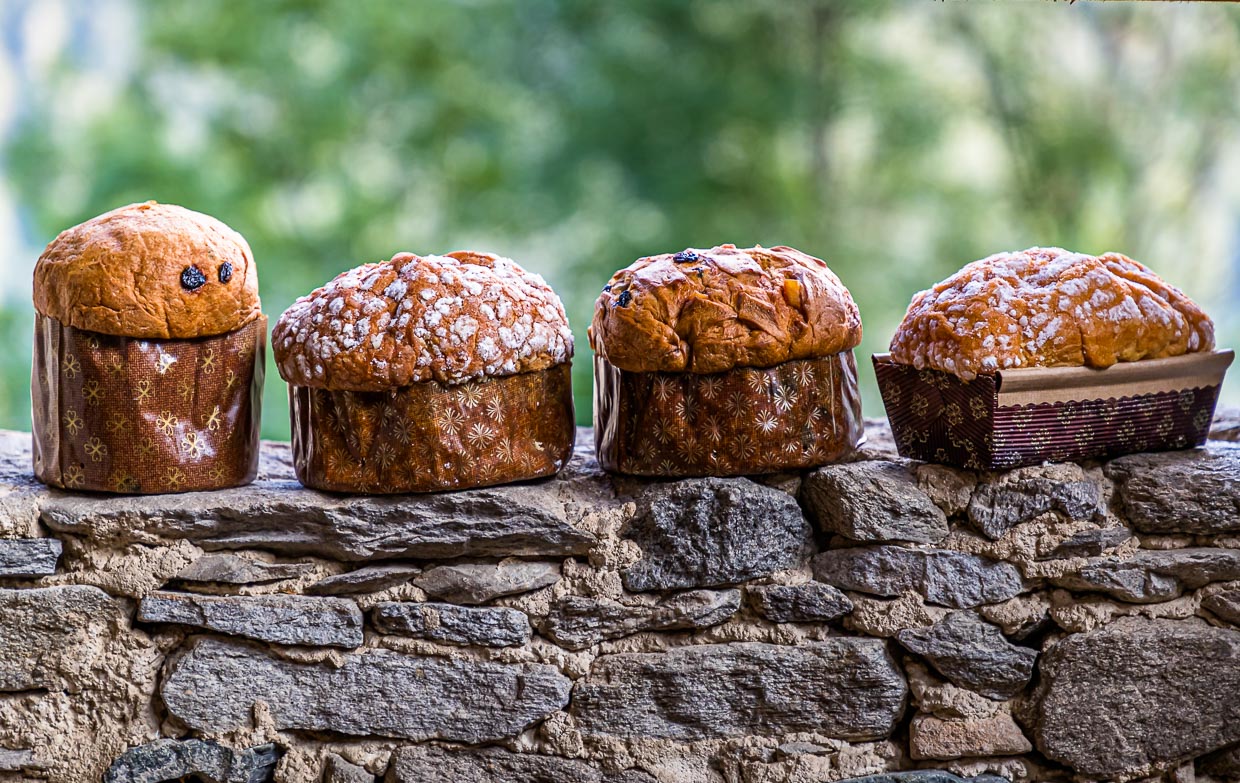
The legend of Toni’s bread
In the Sforza Castle in Milan, the duke once celebrated in great company. His cook had to confess to him that the dessert was burnt. So the duke threatened the cook with death if the feast ended without a dessert. But a kitchen assistant named Toni saved the cook’s life. He had already prepared a fruit bread for his family at the turn of the year. The bread of Toni – Pan de Toni found favor with the Duke. Nowadays, in all Ticino and probably in all Italy, there is no family that spends Christmas without Panettone.
Good Panettone has its price
A pastry that requires so much time and skill and is made with only the best ingredients is not available in the supermarket. In a handmade panettone are added butter, eggs, the best candied orange peel, citron peel from organic fruits, raisins even nuts and vanilla are sometimes included. A 500 g Panettone costs from 18 Euro upwards.
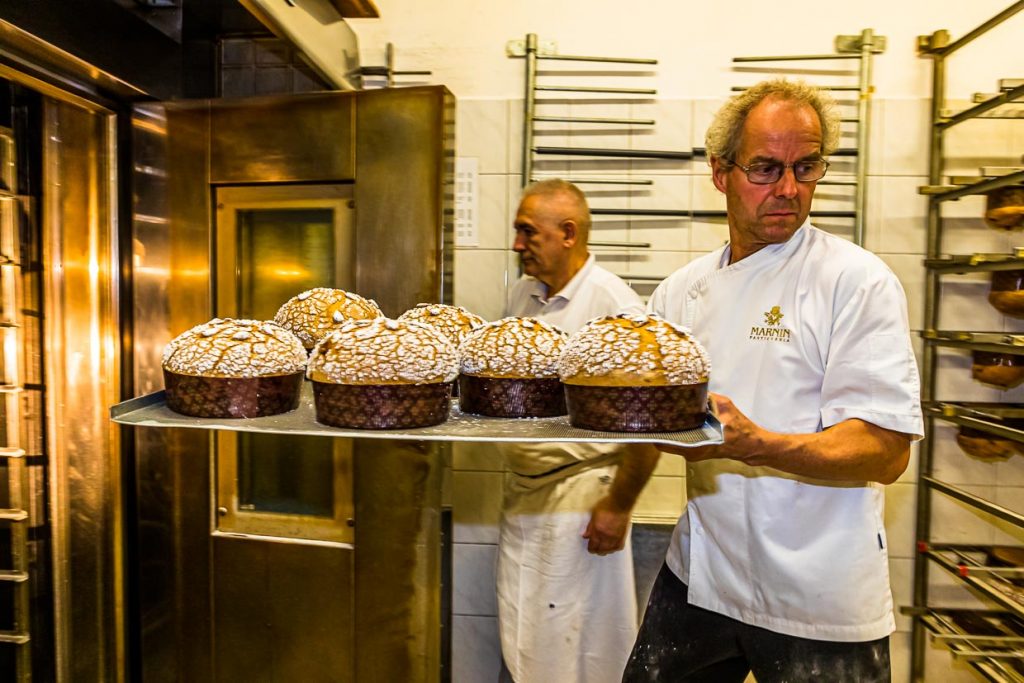
Contemplative Christmas? Not for the baker.
Arno Antognini likes working at night. It’s quiet. No phone going off. No distractions. Usually his workday ends before noon. Then he goes to sleep. His dough needs to sleep, too, he says. However, during the Christmas season, neither he nor his dough get to rest for long. Every four hours, he then has to tend to the dough and refresh it until it is ready as a starter for another 180 kilos of Christmas panettone. Day after day until Christmas Eve.
Panettone and other delicacies of Pasticceria Marnin are available in the houses in Locarno and Ascona and through the online store. Another specialty of the house are Amarettini and the in-house confectionery produces pralines and chocolates.
Print publication
The research trip was partly supported on site by Switzerland Tourism

